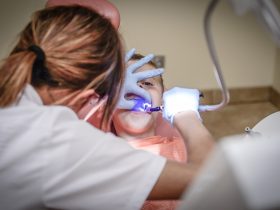Nurses are an essential part of the healthcare industry. Nurses are lifesavers, qualified to deal with a wide range of medical situations. Doctors diagnose, treat, and prescribe medications, and don’t have to stick around for patient recovery, whereas nurses have to provide round-the-clock care.
They are able to make a significant difference in their patients’ lives by working unselfishly toward their recovery. As nurses spend a majority of their time tending to patients, communication becomes a key aspect of the job.
Part of the nurses’ obligations in taking care of the patients is maintaining effective interpersonal communication. Tweaking your nursing workflow a little can go a long way in developing meaningful nurse-patient relations.
Nurses who are courteous, humble, and compassionate in their words and behavior, build a trusting bond with their patients. Nurses should be able to effectively communicate with their patients and make an effort to understand their specific feelings and perspectives.
EFFECTIVE PATIENT COMMUNICATION SKILLS NURSES NEED
In nursing, the aim of effective communication, which encompasses both verbal and non-verbal, is to approach the problems faced by each patient with an open mind.
- Verbal communication
The significance of strong oral communication cannot be overstressed. A nurse must be clear and authentic in her communication with the patients. It’s vital that you tailor your speech to the age, culture, and literacy levels of the patients.
Your tone should be friendly, yet authoritative. A suitable word selection will enable you to gain patient trust. Use questions like, “Can you tell me a little more?” in order to probe for more information and as encouragement for patients to speak freely.
Avoid making any remarks that might be misconstrued as sexist, like ‘honey,’ or ‘sweetie’. Similarly, nurses need to make sure that their communication isn’t laced with implicit bias. Implicit bias refers to our likes and dislikes of certain groups of people or ethnicities without being aware of it.
Nurses should consciously strive to eliminate Implicit Bias in Nursing practice to make sure that the patients get the care they need without considerations for their race or ethnic background.
- Non-Verbal Communication
Nonverbal cues communicated through eye contact, body movements, actions, demeanor, and voice tone are all important in building rapport. Smiling can make a big difference in building confidence among your patients and welcoming them to open up about their medical experience.
Second, maintaining eye contact and nodding shows that you are interested in what the patient is saying and that you’re paying them full attention.
- Active listening
It refers to listening with intent in order to comprehend what the other person is trying to communicate. Active listening requires your entire focus and engagement.
It is a skill that is important not only for nurses but also for other healthcare workers who would want to be able to connect with patients on a deeper level in order to influence their behaviors and help them recover.
Active listening requires us to use both of our verbal and nonverbal communication skills. To indicate interest, don’t interrupt the patient when he/she is speaking, even nodding a little every few seconds or so can help you communicate your interest to the patients.
And if you use encouraging phrases like, “I understand” or “keep going,” they can help your patient open up about their problems even more.
CONSEQUENCES OF COMMUNICATION GAPS
Poor communication leads to medical malpractice. Efficient communication saves patients from harm amid the confusion created by misinterpretation. A range of factors are responsible for creating communication gaps between the medical staff and patients.
The biggest reason why communication gaps happen is when the patient interprets the wrong meaning out of a well-intended message, although owing to no fault of their own.
We can attribute these communication gaps to the following factors:
- Patients’ old beliefs and values
- Environmental factors
- Practitioners’ communication incompetencies
- Patient health condition
BARRIERS TO EFFECTIVE COMMUNICATION
There are certain barriers to effective communication that can exist between a patient and a nurse. Out of all the barriers, these three have the most impact:
- Patients’ own level of understanding
- Message complexity (the message is ambiguous/ not clear)
- Contradiction in nurses’ messages and body language
TECHNIQUES FOR EFFECTIVE COMMUNICATION
If nurses want to improve their patient communication, then they have to work on the following for building trust and making communication effective.
Understanding the needs of patients
Patients might be quick in drawing conclusions, hearing only what they want to hear, and subconsciously reframing or oversimplifying a message from the nurse.
One way to avoid this is to ask them for clarifications on what was communicated.
Using this, you’ll get a fair assessment of both your own communication skills and also how your message has been taken by the patient. Position yourself in your patient’s place, and think from their perspective as to how would you like a message to be communicated to you.
Stress therapy
When having painful conversations with patients or their families, you might experience anxiety or nervousness. You might blush or stutter, which might cause you to give out mixed signals regarding your authority as a nurse.
Patients are less likely to perceive you as an authority on their health or even heed your advice because there’s a disconnect between what you are communicating with words and your non-verbal cues.
On the other hand, if you manage to control your nerves, you will be able to calmly help patients and their families follow procedure and even soothe their concerns.
CONCLUSION
Patient-nurse communication is absolutely essential for health care. A number of reasons are responsible for the existence of communication gaps between patients and nurses. Barriers to communication are also responsible for miscommunications between patients and healthcare providers. The strategies mentioned above can help care providers, especially nurses, create better communication experiences with the patients.







